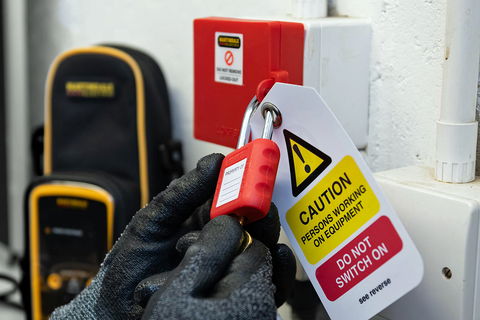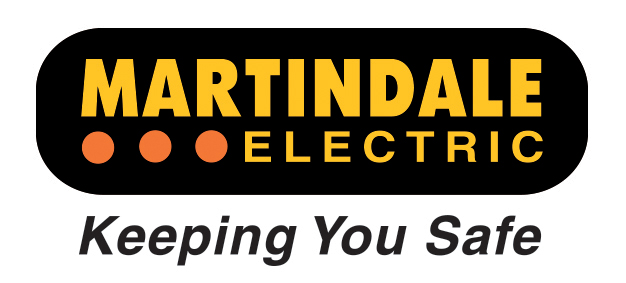Ensuring electrical safety is critical for heating engineers. Safe isolation procedures, proper tools and careful verification are key to preventing accidents and protecting lives on the job, says Steve Dunning, Managing Director at Martindale.

Heating and air conditioning engineers frequently encounter electrical hazards, often without realising the potential risks involved. From installing boilers to working near live circuits, even a small mistake can lead to serious injuries or worse. Each year, the Health and Safety Executive (HSE) receives reports of electrical accidents involving tradespeople across the construction industry. These incidents can result in electric shocks, burns or life-threatening injuries, with some cases leading to fatalities.
Safe isolation procedures are vital for plumbers, air conditioning and heating installers working in environments where electricity can be a hidden but dangerous risk. Isolation procedures prevent accidental contact with live components both for the person working near the system and any unsuspecting passers-by ensuring that circuits and equipment are fully de-energised before work starts.
Lockout kits
To carry out safe isolation procedures effectively, lockout kits are essential. A basic set should contain a range of locks for miniature circuit breakers (MCBs) and other types of breaker, a padlock with a unique key or a combination lock, and a hasp to be used when multiple individuals are engaged in servicing a system. Additionally, the kit should come with an assortment of lockout tags and warning stickers.
The key or the code for the combination lock should remain with the individual performing the task or with an appointed representative to prevent unauthorised persons from removing the lock, which could lead to the circuit accidentally being switched on. Once the breaker has been locked off correctly, a warning tag should be attached to clearly identify that the circuit has been locked off and is currently being worked on.
Proving dead
Locking off the circuit correctly is just one part of the procedure. Before carrying out any work, the circuit must be confirmed as definitely dead. A dedicated voltage indicator (which must conform to the BS EN61243 standard) should be used, such as the Martindale VI-13800 or VI-15000 models. Any voltage indicator used for proving dead should be capable of functioning without a battery as, if the battery is depleted, it would fail to confirm that the circuit is indeed dead. Though some voltage indicators give an indication of battery status the ideal solution is to remove potential battery issues completely.
The procedure for proving dead is to take your voltage indicator and check it against a known source, such as a proving unit. First test the circuit, then test the voltage indicator against the known source again to prove the tester has not failed during testing. While a live source could be used for testing, a proving unit specifically matched to the voltage indicator is a safer and more reliable option and will always be available.
ALIVE
Safe isolation is an issue that Martindale Electric takes extremely seriously and the company has devised the acronym “ALIVE” to make it easier for anyone working near an electrical installation to remember the process.
A is for Approved kit. All equipment must meet legal safety standards; Voltage Indicators (VI) should comply with BS EN61243-3.
L is for Lock Out. Identify the point of isolation – lock it off and place warning tags onto the equipment.
I is for Initial Prove. After locking out the equipment, test your VI against the proving unit to make sure it is working properly.
V is for Voltage Test. Next, use your VI to make sure dangerous voltage levels are not in the circuit you are about to work on. Verify that the circuit you intend to work on is the correct circuit you have safely isolated.
E is for Ensure. Finally, prove the VI against the proving unit again before starting to work on the circuit to make sure that no damage has occurred, or fault appeared on your equipment.
Kits
To help gas engineers stay safe near electricity and meet the stringent requirements of the Gas Safe Register Technical Bulletin 118 (TB118), Martindale Electric has two specialised kits available. The TB118KITA electrical safety kit is designed specifically for gas engineers and contains LOKKITGAS1, a set of four essential locking-off devices, VIPD138-S, a voltage indicator and the PD440S proving unit, designed for safe and simple voltage indication and proving dead.
The Martindale TB118KITB kit includes all the items in the TB118KITA, plus the EZ664 socket tester, which allows users to connect to standard 13-amp plugs or use flying leads for testing fused spurs, terminals and even light fittings. It can also measure earth loop impedance without tripping a 30mA or higher residual current device (RCD) in the circuit. The kits are ideal for gas engineers working in environments where safe electrical isolation and earth loop verification are paramount.
In an industry where the risks of working near electricity are often overlooked, following proper safety protocols is essential for plumbers and heating installers. Implementing safe isolation procedures, using the right tools, and verifying circuits are dead can significantly reduce the chance of serious accidents, ensuring a safer working environment for all.
For more information visit www.martindale-electric.co.uk/
